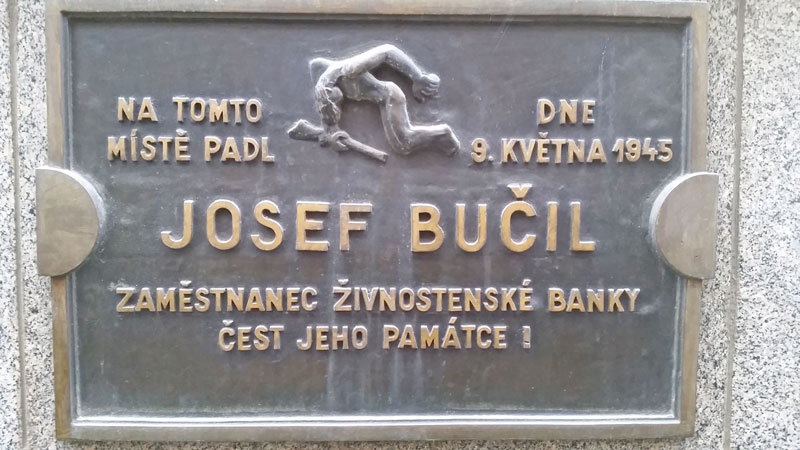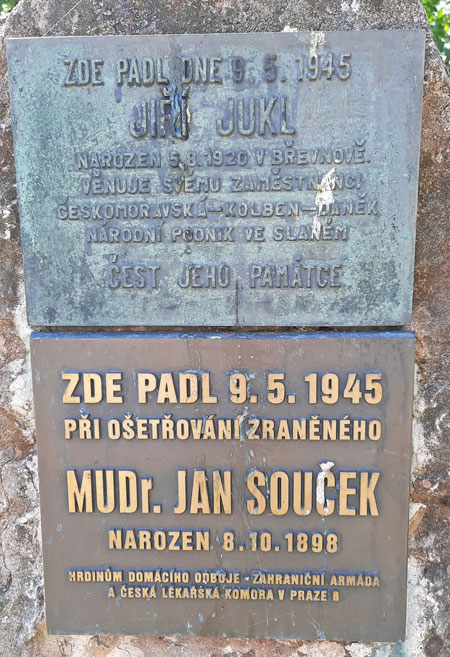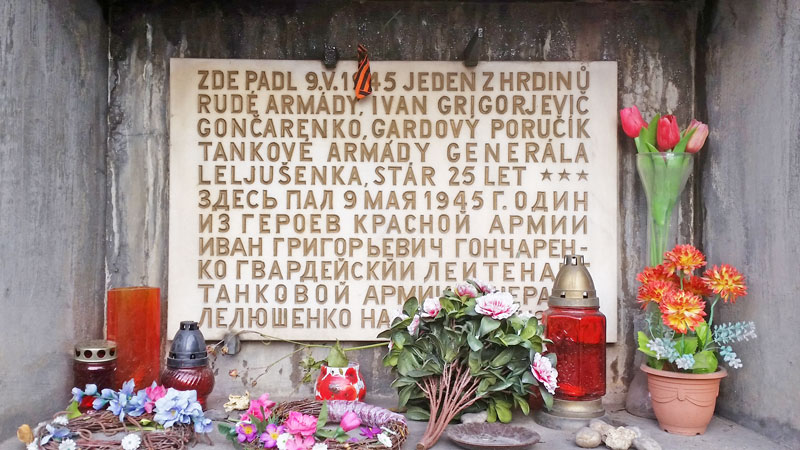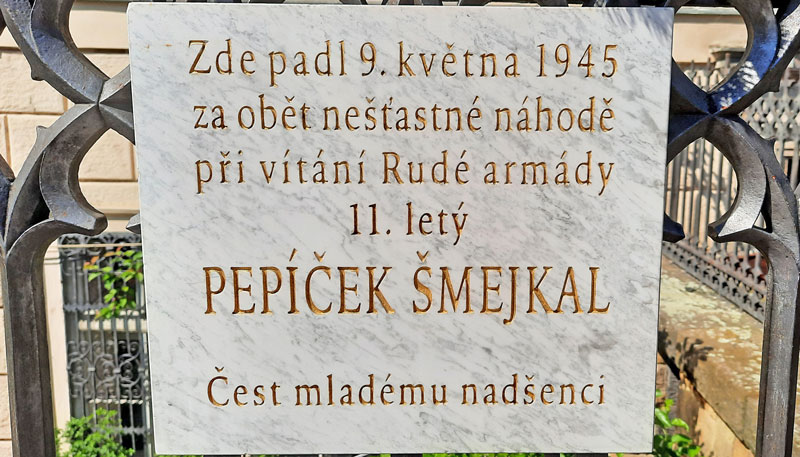May 9th 1945 Memorials
Look at any English language text books and they’ll all say that World War Two in Europe ended on May 8th so how unlucky was it to be killed on that day or even the day after. The Czech Republic has a state holiday on May 8th to commemorate the end of the war but what you might not realise is that for 41 years in this country between 1948 and 1989 they commemorated May 9th. Let’s find out why.

On May 5th 1945 people became aware that Berlin had fallen and that allied forces were heading towards Prague. A radio broadcast began what was called the Prague Uprising which was a civilian uprising that lasted from the 5th to the 9th. This is a memorial plaque to Josef Bucil, killed in the area of Republic Square the plaque is located on the Czech National Bank building. In this case we can link his death with the last violent act of aggression by the Nazi forces in Prague i.e. the attack on the nearby Masarykovo Train Station at around 10am. The plaque states that he fell on the 9th and that he was an employee of a bank.
Did WW2 in Europe Finish on the 8th or the 9th?
Actually there’s a host of evidence that there was fighting going on until the middle of May 1945 but as far as the western allies were concerned, the terms of the surrender of the German armed forces took effect on May 8th. However, on closer inspection that did not include the Soviet forces. Prague was not officially liberated until May 9th by the Red Army so under the communist regime that was why for decades we commemorated the 9th.
Other Memorials
Of the thousands of memorials to those killed during the occupation and at the end of the war during the Prague Uprising there are a few desperately sad memorials dedicated to people killed on May 9th. Here are a few more examples.
The Doctor

I cannot put my hand on my heart and say who killed them as it would have been chaotic in Prague with a German rear guard fighting the Red Army advance so “crossfire” was probably the cause. It’s very easy to walk past this one close to the Sand Gate in Prague 6. Just two plaques identifying a local 24 year old man on the top plaque and a 46 year old doctor (Mudr) on the bottom plaque. We can thank somebody for the extra words on that bottom plaque because it tells a story. Firstly the doctor was not local as it states “Praze 8” or the 8th district which is on the opposite side of Prague so he must have had good reason to be in this area. Secondly, there are the words “hrdinum domaciho odboje” which identifies the doctor as a hero of the resistance, not just a passer-by. It also has the words “pri ošetrovani zraneneho” which translates as “whilst caring for the injured”. This would seem to indicate that the man in the plaque above called Jiri Jukl may have been shot first and the doctor was shot while attending to him. Either way, both died on the morning of May 9th.
The Soldier

The Soviet Army suffered some casualties fighting their way into the city. A young tank commander called Ivan Goncarenko was killed on the morning of May 9th and I’ve gone into that story much deeper on the Ivan Goncarenko post.
The Boy

What could be sadder than being killed after the hostilities had finished. In this case we have the memorial plaque to an 11 year old boy. It’s situated on the railings behind the statue of King Charles IV on the Old Town side of the Charles Bridge. Again it has some extra text that says “za obět neštastné náhodě pri vítání Rudé armády” which translates as “as a result of an unfortunate accident whilst welcoming the Red Army”. Statements from the time say it was the afternoon of May 9th and that the young boy, who lived just 200 metres away, was fascinated by the tanks parked on the road and the weapons in the hands of the Red Army soldiers sitting around the little square. It was when a soldier showed him his weapon that the gun went off accidentally killing the boy. Pepíček is not the correct name as it’s the Czech friendly name that you call somebody very young called Josef. But as that is what most people would have called him, Pepícek Šmejkal remains the youngest memorialised victim of May 9th. The bottom line of the memorial reads “Čest mladému nadšenci” or in English “in honour of the young enthusiast”.
Something Related or a Few Minutes Away
History/WW2 – Thomas Vokes and William Greig
History/WW2 – The Beneš Decrees
History/WW2 – Protectorate of Bohemia and Moravia
